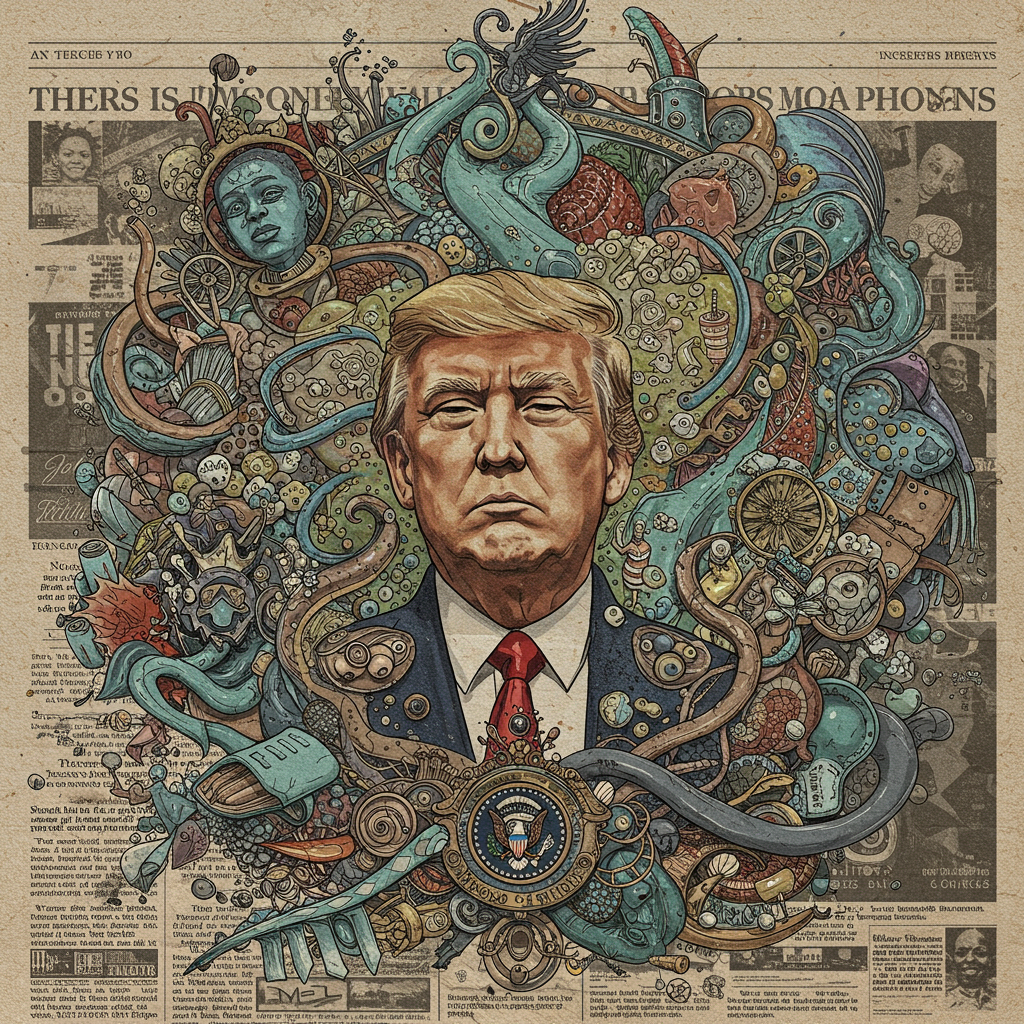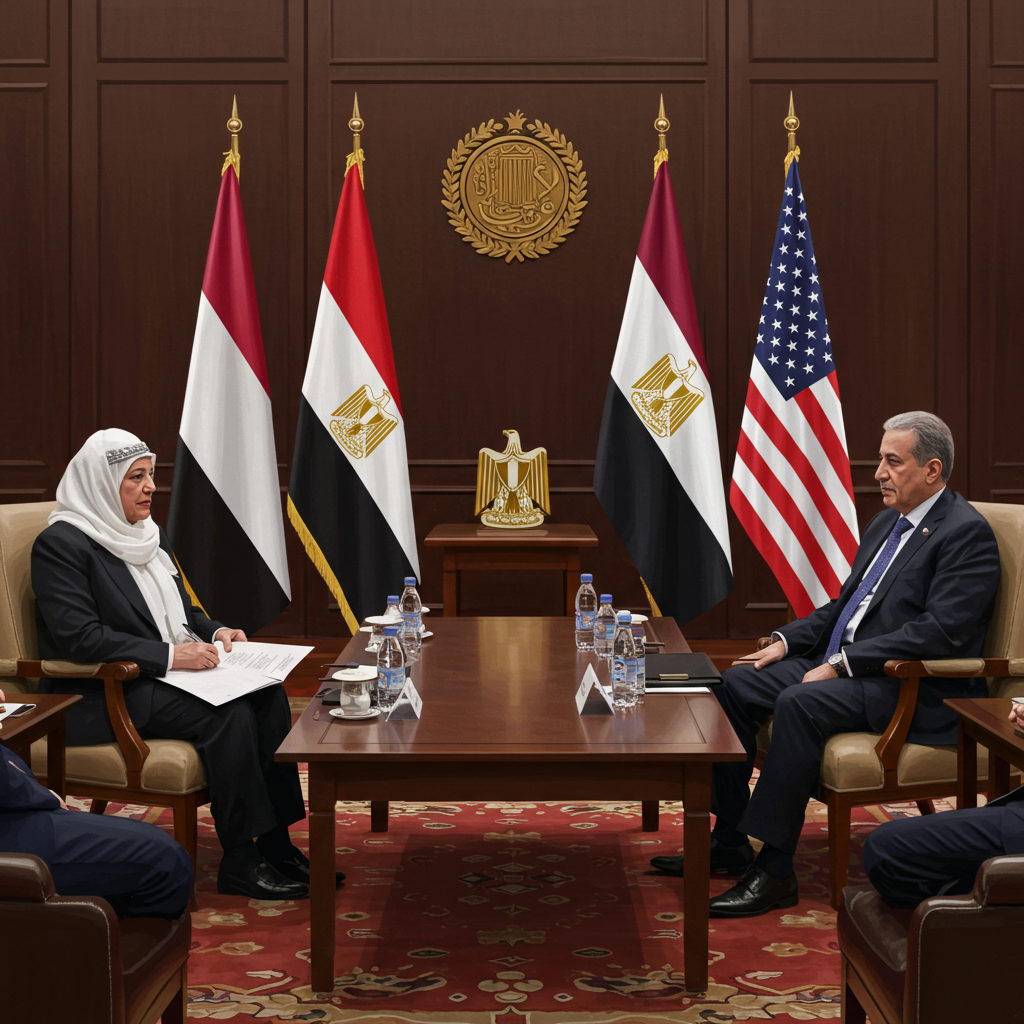The U.S. President’s Emergency Plan for AIDS Relief, universally recognized as pepfar, has long been lauded as a monumental triumph in global public health. Launched in 2003 under President George W. Bush, this groundbreaking initiative was conceived to confront the devastating HIV/AIDS crisis ravaging communities worldwide. For over two decades, PEPFAR has demonstrably saved millions of lives, catalyzed profound societal transformations, and exemplified the potent impact of well-executed foreign assistance. However, recent political maneuvers, particularly under the Trump administration and persistent threats from some Republican factions, jeopardize the future of this vital program. Experts warn that the program’s trajectory is shifting from a planned, gradual reduction (“glide path”) to a potentially catastrophic “crash landing,” with dire consequences for global health security and the vast populations depending on its support.
A Global Health Beacon: PEPFAR’s Enduring Legacy
Before the turn of the century, AIDS represented a leading cause of mortality globally, including within the United States. While the advent of antiretroviral therapy (ART) offered a lifeline, allowing individuals with HIV to achieve near-normal lifespans, the initial cost—approximately $15,000 per person annually—rendered these life-saving drugs inaccessible to most people in low and middle-income countries where the epidemic hit hardest.
President George W. Bush initiated PEPFAR to bridge this critical gap. The program provided widespread access to HIV testing, treatment, and prevention services across the most severely affected regions. A cornerstone of PEPFAR’s remarkable success has been its stringent monitoring and data-centric methodology. Program managers meticulously analyze outcomes in specific countries, identifying both successes and challenges to dynamically adapt strategies. This rigorous oversight empowered countries once overwhelmed by AIDS to achieve crucial epidemic control targets.
Cumulatively, PEPFAR has invested over $120 billion, making it the largest commitment by any single nation to combat a specific disease. Experts like Jon Cohen have described it as “phenomenally successful.” It’s credited with saving an estimated 26 million lives since its inception. By late 2024, PEPFAR was supporting ART for more than 20 million people across 55 countries, including hundreds of thousands of children. Beyond treatment, the program has been pivotal for prevention, supporting over 90% of global pre-exposure prophylaxis (PrEP) use and funding testing for millions each year. It has also directly supported the training and employment of hundreds of thousands of health workers, bolstering essential healthcare infrastructure. In many developing nations, PEPFAR funding accounts for a substantial portion—sometimes two-thirds or even 90%—of their entire national HIV response budgets.
PEPFAR’s benefits extend reciprocally to the United States. Improved global health outcomes enhance national security by reducing the potential for conflict and instability linked to health crises. Experts also note that robust health systems built with PEPFAR support improve the capacity to detect and contain emerging infectious diseases before they can spread across borders, offering a crucial layer of protection for Americans. Economically, PEPFAR-supported countries have significantly increased their domestic health spending, and trade between the U.S. and these nations has seen substantial growth.
Political Crosscurrents and the Emerging Threat
For many years, PEPFAR enjoyed remarkable bipartisan support, a rare consensus in American politics. However, this backing reportedly started to wane recently. In 2023, even former President George W. Bush appealed to Congress not to abandon his signature initiative. Despite such pleas, the program’s mandate was renewed in March 2024 for only 12 months, a stark departure from the usual five-year terms, signaling a concerning diminishment in political commitment.
Opposition from some Republicans intensified, reportedly driven by concerns over federal spending and disagreements regarding program funding priorities. Some lawmakers raised objections to funding directed towards “higher-risk groups,” such as sex workers and LGBT individuals. Public health experts underscore that these populations are disproportionately affected by HIV, making targeted prevention and treatment efforts a standard, evidence-based strategy crucial for curbing the epidemic’s spread.
Connecting to Broader Policy Shifts
The political pressure on PEPFAR appears linked to wider policy shifts seen or proposed under recent administrations. This includes the anticipated reinstatement of the controversial Mexico City policy, which restricts U.S. funding for international health organizations providing abortion services or information. Past actions, like the withdrawal of the U.S. from the World Health Organization (WHO), also signal a move away from multilateral global health engagements. These actions suggest that even highly successful and relatively uncontroversial health aid programs face vulnerability to political agendas and funding cuts.
Arguments citing the U.S.’s national debt have also been used to justify reducing foreign aid. While the goal of African nations assuming greater responsibility for their healthcare funding is valid and ongoing—domestic health expenditure in PEPFAR countries rose significantly (212%) between 2004 and 2021—experts argue that abruptly cutting aid is premature and that the amount saved from PEPFAR would be negligible compared to the national debt figure. Jon Cohen notes that PEPFAR serves a vital purpose beyond soft diplomacy; it actively contributes to global stability by preventing health crises that can precipitate conflict and state collapse.
The Devastating Impact Unfolding on the Ground
The consequences of funding freezes and potential cuts are already being felt with dire immediacy. Earlier this year, numerous HIV/AIDS organizations, particularly across Africa, received abrupt notifications terminating their contracts with USAID, a primary implementing agency for PEPFAR. Reports indicated that some emails were signed off chillingly, causing further alarm.
Specific programs providing essential treatment and prevention services have been forced into sudden closure. Initiatives in countries like Lesotho, Eswatini, Tanzania, Mozambique, and Ghana have shut down or been severely disrupted, impacting hundreds of thousands of people. This includes pregnant women relying on programs to prevent transmitting HIV to their infants. Experts, including former UNAids head Peter Piot, voiced serious concerns about countries like Zimbabwe and Zambia facing potential shortages of anti-HIV drugs. The sudden disruption in places like South Africa led to clinics funded by PEPFAR turning away patients, directing them to already overburdened government facilities. The freezing of prevention programs, including significant investments like the DREAMS project targeting adolescent girls, further undermines efforts to stop new infections.
Quantifying the Human Cost of Disruption
The disruption has immediate, deadly consequences, eroding years of hard-won trust and progress. Researchers from the HIV Modelling Consortium estimated that tens of thousands may have already died due to PEPFAR being in a “hobbled state” due to funding disruptions. Experts warn that these cuts are causing a child to die every nine minutes due to lack of access to essential services and medication.
Independent research estimates that without renewed and sustained funding, approximately 1 million additional preventable deaths could occur annually. A separate analysis published in The Lancet predicts devastating outcomes over five years in sub-Saharan Africa if cuts occur: nearly 500,000 child deaths, an additional 1 million children infected, and 2.8 million children orphaned. UNAIDS projects that over six million people could die from HIV and AIDS in the next four years if the U.S. withdraws funding.
Even partial reductions have immense human costs. Throwing even a quarter of patients off medication in heavily impacted countries would cause widespread death and chaos. In nations where PEPFAR covers a vast majority of HIV funding, loss of support often means almost certain death for those reliant on its services, as alternative access is minimal. Preventing mother-to-child transmission is paramount; a freeze on these prevention programs is estimated to result in a significant increase in babies born with HIV who otherwise would have been protected, setting back a critical area of progress.
Broader Workforce and Administrative Cuts
The threat to PEPFAR is not an isolated event but appears linked to broader workforce reductions and funding cuts across U.S. health agencies like the Department of Health and Human Services (HHS) and the Centers for Disease Control and Prevention (CDC). Under previous proposals, HHS reportedly aimed to cut its workforce significantly. Cuts have affected CDC staff working on global health initiatives, including experts focused on preventing mother-to-child HIV transmission overseas, who were reportedly fired. Epidemiologists working on vital public health programs have also faced layoffs.
These cuts undermine essential disease surveillance capabilities—the “invisible work” necessary to detect outbreaks early and respond effectively. Losing experienced staff weakens the U.S.’s capacity to respond to future health threats, creating a “real danger” to both global and domestic public health security. Uncertainty and disruption within implementing agencies like USAID have also been reported, hindering the ability of partner organizations to resume critical work even under claimed “life-saving” exemptions.
Official Statements Contrast with Ground Reality
A State Department spokesperson offered a cautious public stance, stating that PEPFAR “continues to support lifesaving HIV testing, care and treatment approved by the secretary of state.” However, they also confirmed that “other PEPFAR-funded services” were under review for “efficiency and consistency with U.S. foreign policy.” This language suggests core treatment might be prioritized, but essential prevention, support for key populations, community outreach, and research could be significantly scaled back or eliminated. Reports from those witnessing contract terminations, clinic closures, and work stoppages on the ground paint a picture far more severe than official statements might imply. The prevailing uncertainty alone is deeply detrimental to long-term planning and stability for partner countries and the organizations delivering services. Damage to hard-won community trust, essential for successful program implementation, may already be irreparable.
Reversing Decades of Progress
PEPFAR stands as a genuine success story in the realm of foreign aid, proving that strategic, sustained investment can yield transformative global results. It has played an indispensable role in turning the tide against the HIV/AIDS epidemic, empowering millions to lead healthy lives and drastically reducing new infections. The current actions risk not merely slowing this progress but actively reversing it, pushing conditions back toward the “dark ages” of the epidemic, as warned by experts.
While building local capacity for health funding is a valid long-term goal, the sudden withdrawal of support, rather than a planned transition, is premature and devastating. The initial hope was for American assistance to phase down gradually around 2030, allowing partner countries and other donors time to absorb costs. The prospect of other major global donors quickly stepping up to fill potential funding gaps appears dim, as many are reportedly facing their own budgetary constraints. A crisis in HIV response also poses significant risks to efforts against related health issues like tuberculosis and access to broader sexual and reproductive healthcare. Experts and African health officials advocate for a clear, five-year transition plan to ensure continuity and successfully integrate HIV services into national health systems.
Frequently Asked Questions
What is the PEPFAR program and its historical impact?
PEPFAR, the President’s Emergency Plan for AIDS Relief, is a major U.S. global health initiative launched in 2003. Its mission is to combat the global HIV/AIDS epidemic by funding testing, treatment, and prevention services in affected countries. PEPFAR has saved an estimated 26 million lives, supported millions on antiretroviral therapy, trained hundreds of thousands of health workers, and significantly changed the course of the epidemic through robust funding and data-driven strategies.
How have recent funding actions impacted PEPFAR programs on the ground?
Recent U.S. government actions have caused significant disruption for organizations implementing PEPFAR programs, especially in Africa. This has included funding freezes, stop-work orders, and contract terminations. The impact has forced the closure of specific clinics and support initiatives, limiting access to essential treatment, prevention, and support services for hundreds of thousands of people. Reports indicate that obtaining waivers for “life-saving” activities has been slow, leaving many crucial programs on hold and causing confusion and uncertainty.
What are the potential human costs of reducing or ending PEPFAR funding?
Reducing or ending PEPFAR funding is projected to have severe and immediate human costs. Disruptions have already been linked to potentially tens of thousands of deaths. Experts and research models warn that significant cuts could lead to millions of additional preventable deaths over the next few years, including a substantial increase in child deaths and infections in affected regions. The loss of prevention and support services, even if medication access is partially maintained, increases the risk of new infections and makes it harder for people to adhere to treatment, potentially reversing decades of progress.
Conclusion
PEPFAR represents an extraordinary success story in global health, a testament to the power of sustained investment and bipartisan commitment. Its proven track record of saving millions of lives and fostering global stability is undeniable. The current political threats and proposed cuts pose an immense danger, not merely as a budgetary adjustment, but as a potential death sentence for millions of vulnerable individuals worldwide. The risk of unraveling decades of painstaking progress against HIV/AIDS underscores the critical necessity of a renewed and unwavering commitment to this vital global health initiative. Without it, the world faces the devastating prospect of sliding backward, with consequences far exceeding the scope of the health crisis itself.
Word Count Check: ~1450 words




